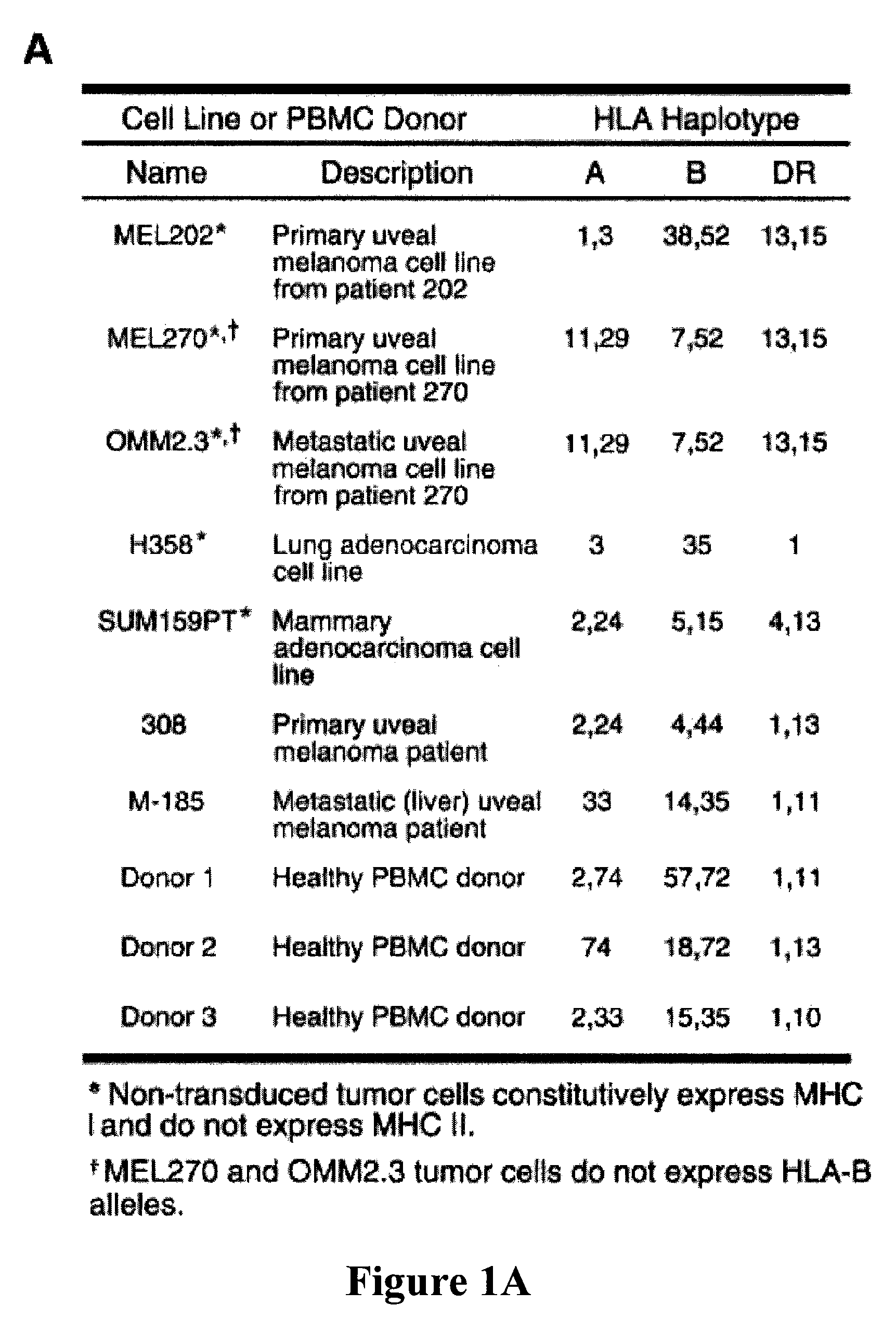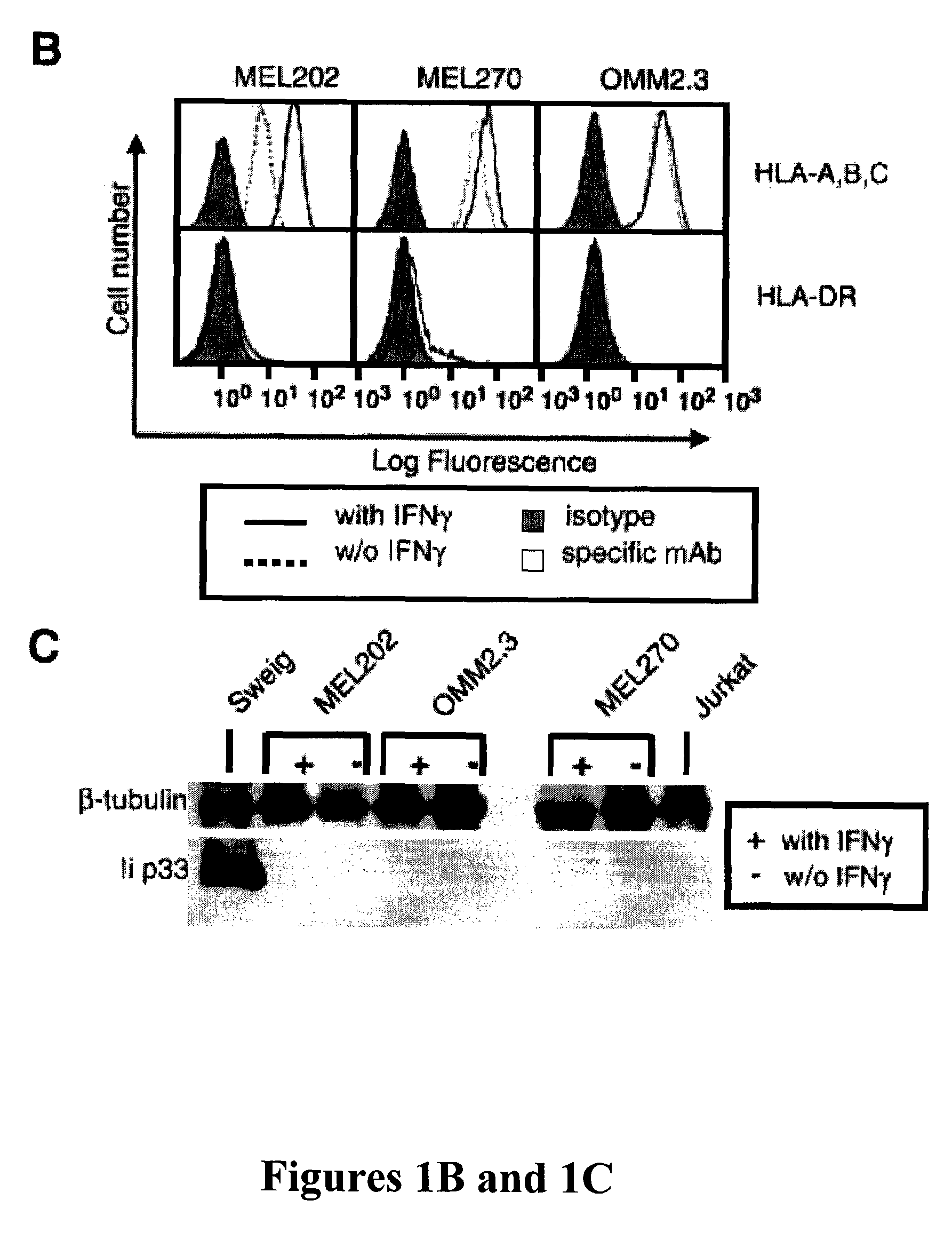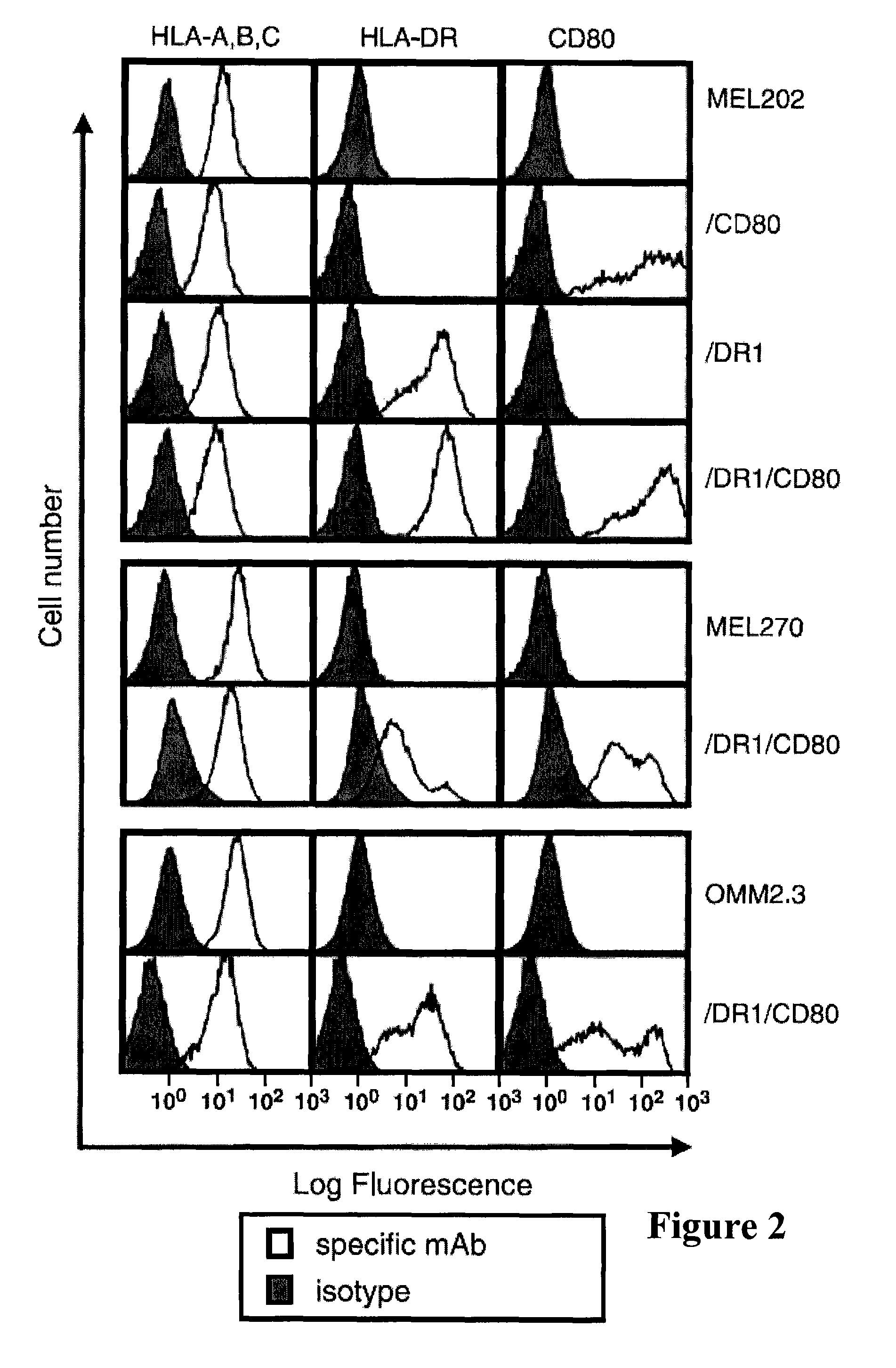Tumor cells from immune privileged sites as base cells for cell-based cancer vaccines
a cancer vaccine and immune-privileged technology, applied in the field of cell-based vaccines, can solve the problems of primary tumor growth, universal death of metastatic uveal melanoma, and inability to prevent the development of metastases, so as to enhance and/or potentiate an immune response
- Summary
- Abstract
- Description
- Claims
- Application Information
AI Technical Summary
Benefits of technology
Problems solved by technology
Method used
Image
Examples
example i
[0138]Primary and metastatic uveal melanoma MHC II vaccines. MHC II vaccines should only express MHC II but not express Ii to allow endogenous tumor peptides within the endoplasmic reticulum access to the peptide binding groove of MHC II molecules. Because the MHC II and Ii genes are coordinately regulated by the MHC II transactivator (CIITA; ref. 38), tumor cells that constitutively express MHC II, or are induced by IFNγ to express MHC II, also express Ii and are not suitable for vaccine development. Conveniently, some uveal melanomas methylate the CIITA gene, preventing expression of either MHC II or Ii (39). To identify uveal melanoma cell lines that cannot be stimulated to express either MHC II or Ii, uveal melanoma cell lines derived from primary tumors (MEL202 and MEL270) or from liver metastasis (OMM2.3) were cultured with or without 100 units / mL recombinant human IFNγ. Cell surface expression of MHC I and MHC II was analyzed by flow cytometry as shown in FIG. 1B and expressi...
example ii
[0140]Vaccine cells express functional MHC II molecules that present endogenously synthesized tumor peptides. To ascertain that the transduced HLA-DR1 molecules of the vaccine cells are functional, DR1+ PBMCs from healthy donor 1 were primed to HER2 / neu peptide 776 and boosted with MEL202 / DR1 / CD80 or OMM2.3 / DR1 / CD80 vaccine cells, which constitutively express HER2 / neu. MEL202 / DR1 / CD80 and OMM2.3 / DR1 / CD80 vaccine cells boost HER2 / neu-primed PBMC, which produce IFNγ as shown in FIG. 3B. DR1 is the functional restriction element for the response because DR1− parental cells (MEL202 or OMM2.3) are not effective. Coexpression of CD80 by the vaccine cells enhances antigen presentation because transductants without CD80 (MEL202 / DR1 or OMM2.3 / DR1) are not as effective APC as vaccine cells expressing both DR1 and CD80 as shown in FIG. 3B. Although the vaccine cells are MHC I allogeneic with respect to the PBMC, there is no allogeneic response because MEL202 / CD80 cells do not activate T cells....
example iii
[0141]MHC II+CD80+ vaccine cells made from primary uveal melanomas prime and boost naive CD4+ T cells. The MHC II vaccines are designed to prime naive CD4+ T cells to novel, endogenously synthesized tumor antigens. To determine if the vaccines have this capability, DR1+ PBMCs from healthy donor 1 were cocultured (primed) with irradiated vaccine cells prepared from primary uveal melanomas (MEL202 / DR1 / CD80 or MEL270 / DR1 / CD80) and boosted with either parental or transduced uveal melanoma cells. Vaccines prepared from mammary carcinoma (SUM159PT / DR1 / CD80; ref. 34) and lung adenocarcinoma (H358 / DR1 / CD80; ref. 5) were also used as boosting agents to determine specificity of the activated CD4+ T cells for uveal melanoma cells and to control for potential alloreactivity. Priming and boosting with either uveal melanoma vaccine induced significant IFNγ release as shown in FIG. 4A. Activated T cells were highly specific for uveal melanoma cells and minimally reactive with breast and lung cance...
PUM
| Property | Measurement | Unit |
|---|---|---|
| median survival time | aaaaa | aaaaa |
| temperature | aaaaa | aaaaa |
| G418 resistance | aaaaa | aaaaa |
Abstract
Description
Claims
Application Information
 Login to View More
Login to View More - R&D
- Intellectual Property
- Life Sciences
- Materials
- Tech Scout
- Unparalleled Data Quality
- Higher Quality Content
- 60% Fewer Hallucinations
Browse by: Latest US Patents, China's latest patents, Technical Efficacy Thesaurus, Application Domain, Technology Topic, Popular Technical Reports.
© 2025 PatSnap. All rights reserved.Legal|Privacy policy|Modern Slavery Act Transparency Statement|Sitemap|About US| Contact US: help@patsnap.com



